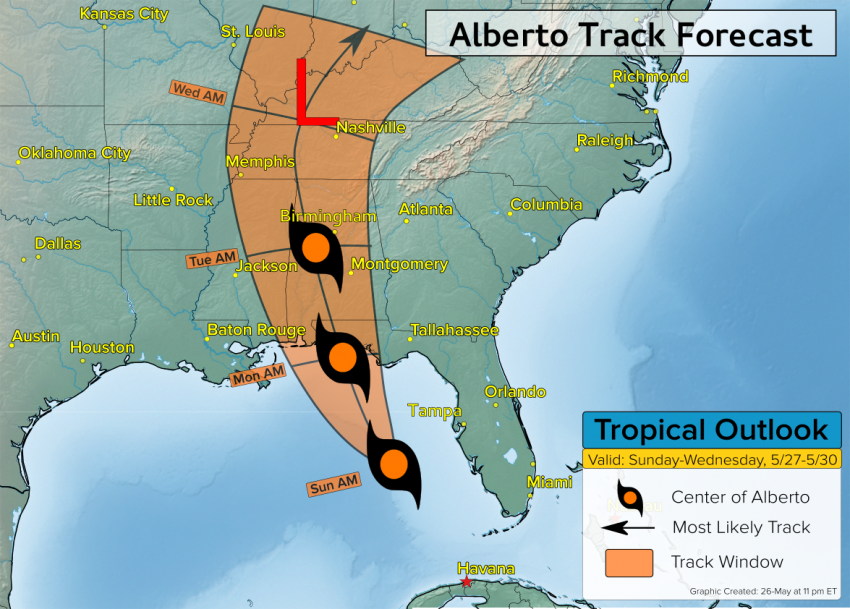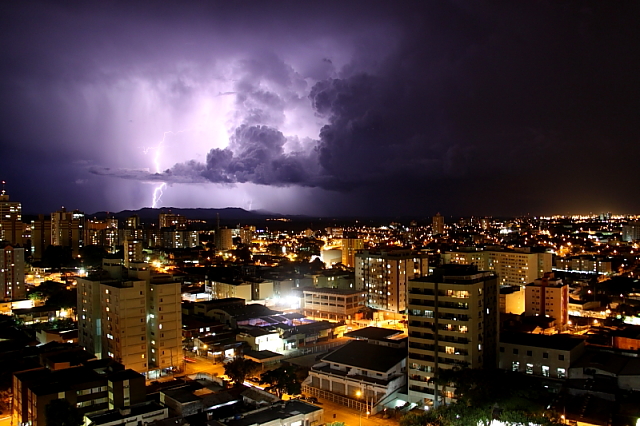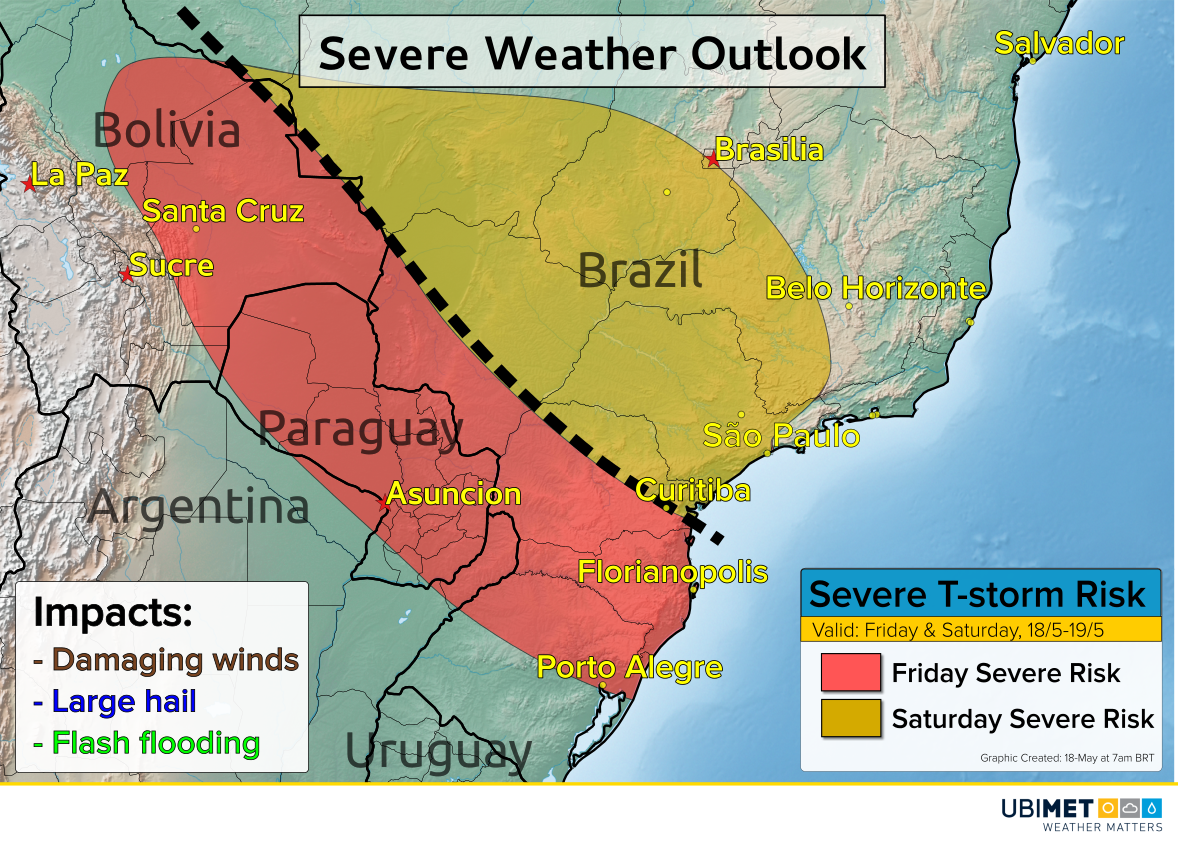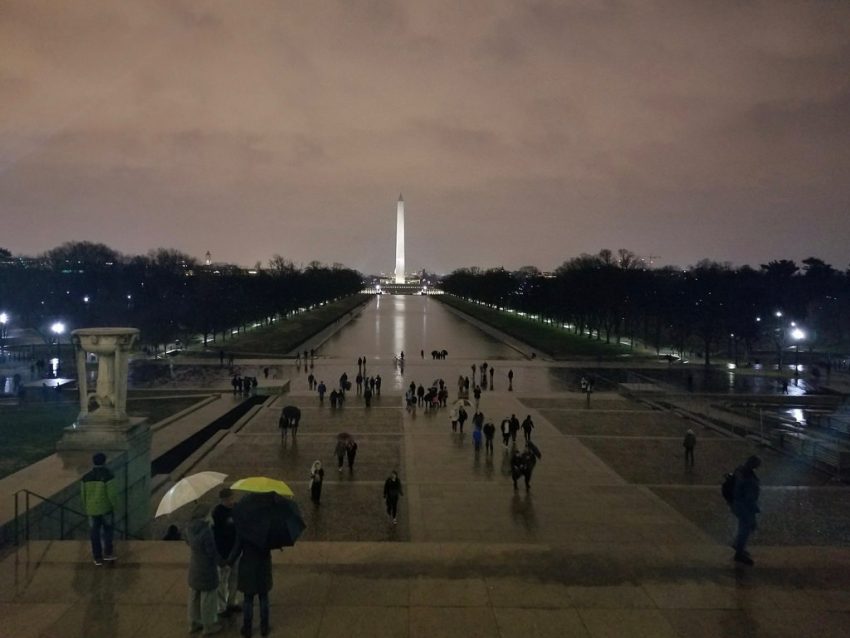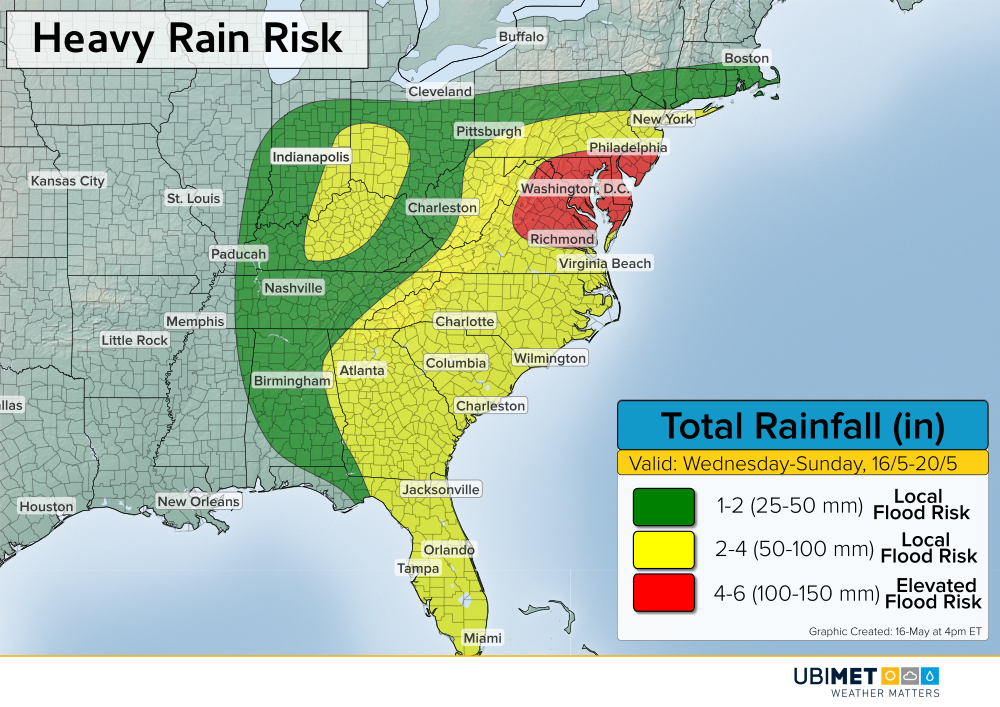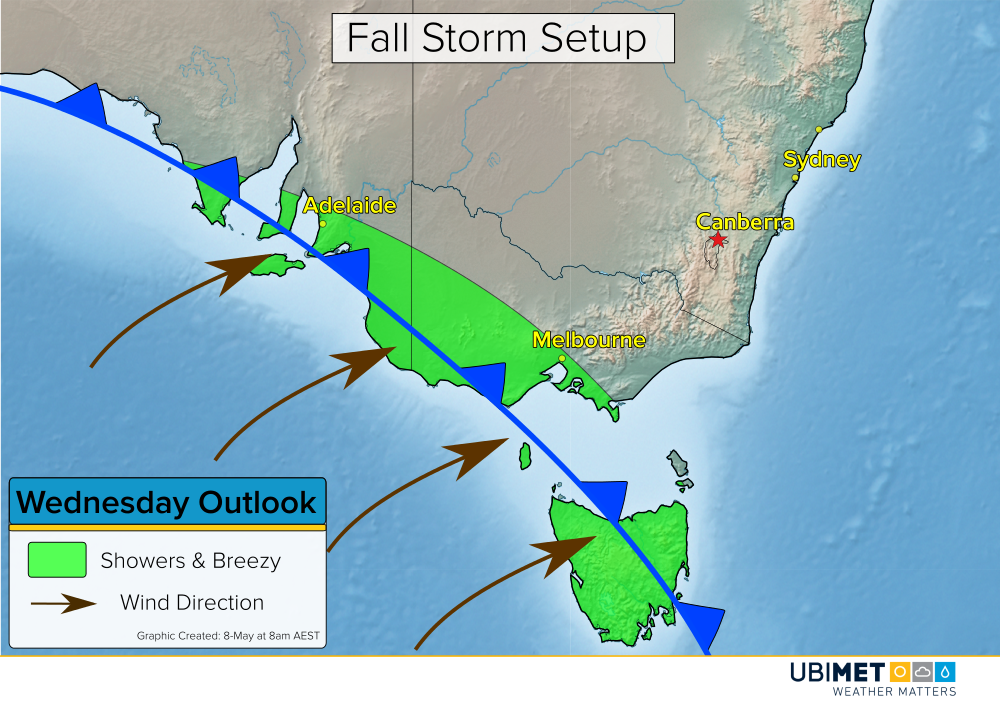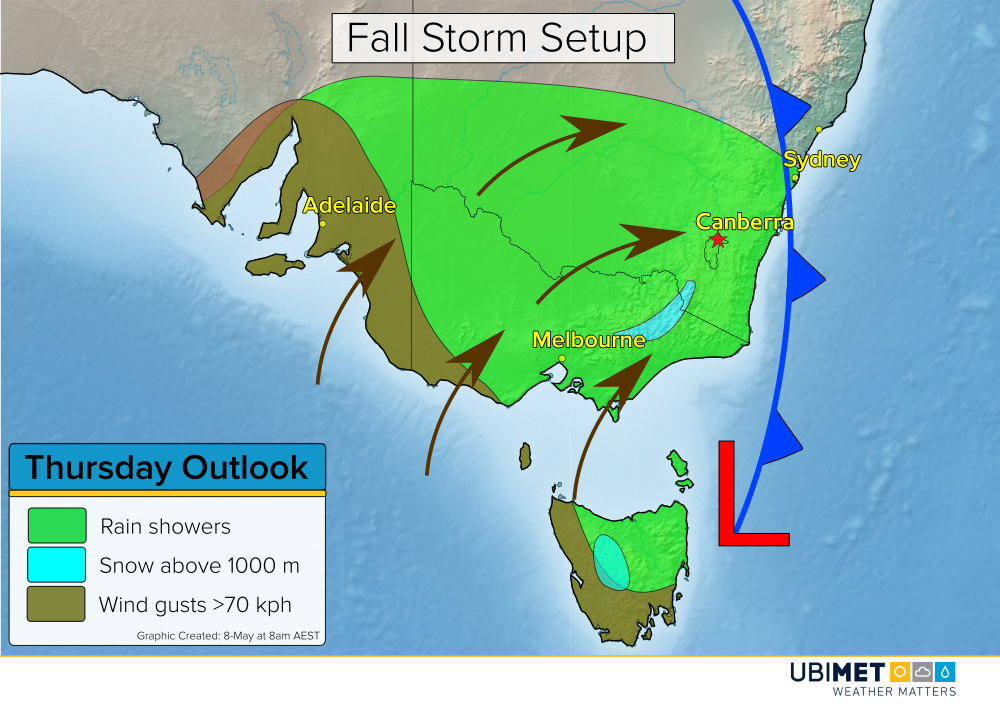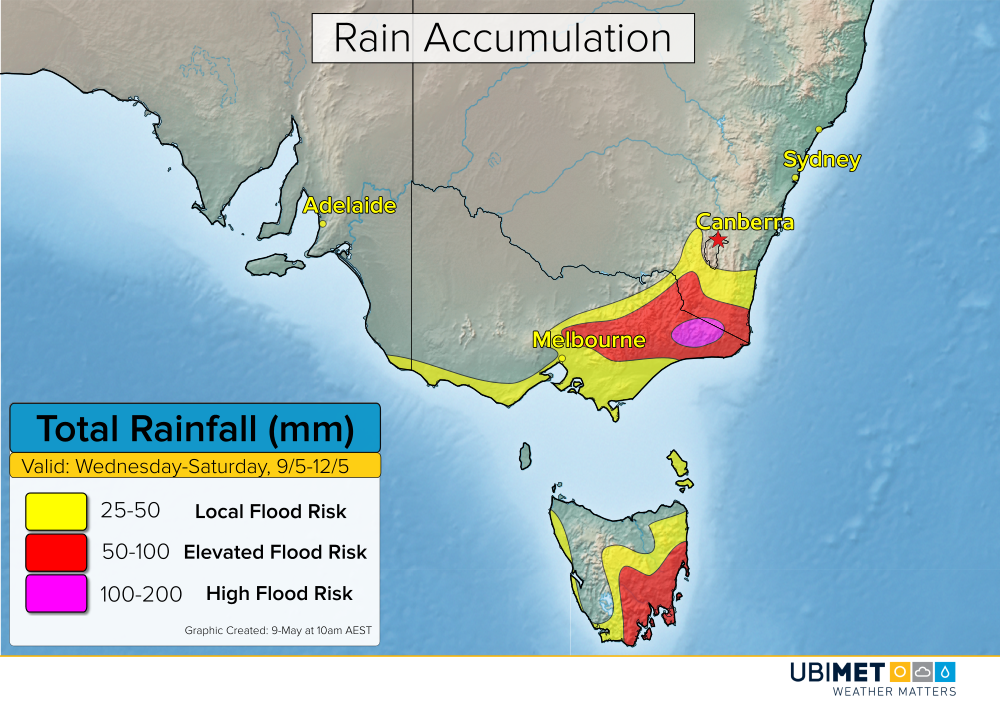Alberto Tracks Toward Florida Panhandle
Tropical cyclone Alberto will move across the Gulf of Mexico and make landfall in the Florida Panhandle later on Monday.
Alberto will impact several states across the Southeast, but affect Florida the hardest with damaging winds and widespread heavy rain. Across the Panhandle a storm surge of up to 2-4 feet is expected around the time of landfall.
Details on Alberto
Alberto will track across the warm waters of the Gulf of Mexico through Monday. Environmental conditions will favor some strengthening as the storm tracks toward the Florida Panhandle.
Landfall is expected between Mobile, Alabama and Apalachicola, Florida Monday afternoon or evening. A storm surge of up to 4 feet is expected near and just to the east of Alberto’s center.
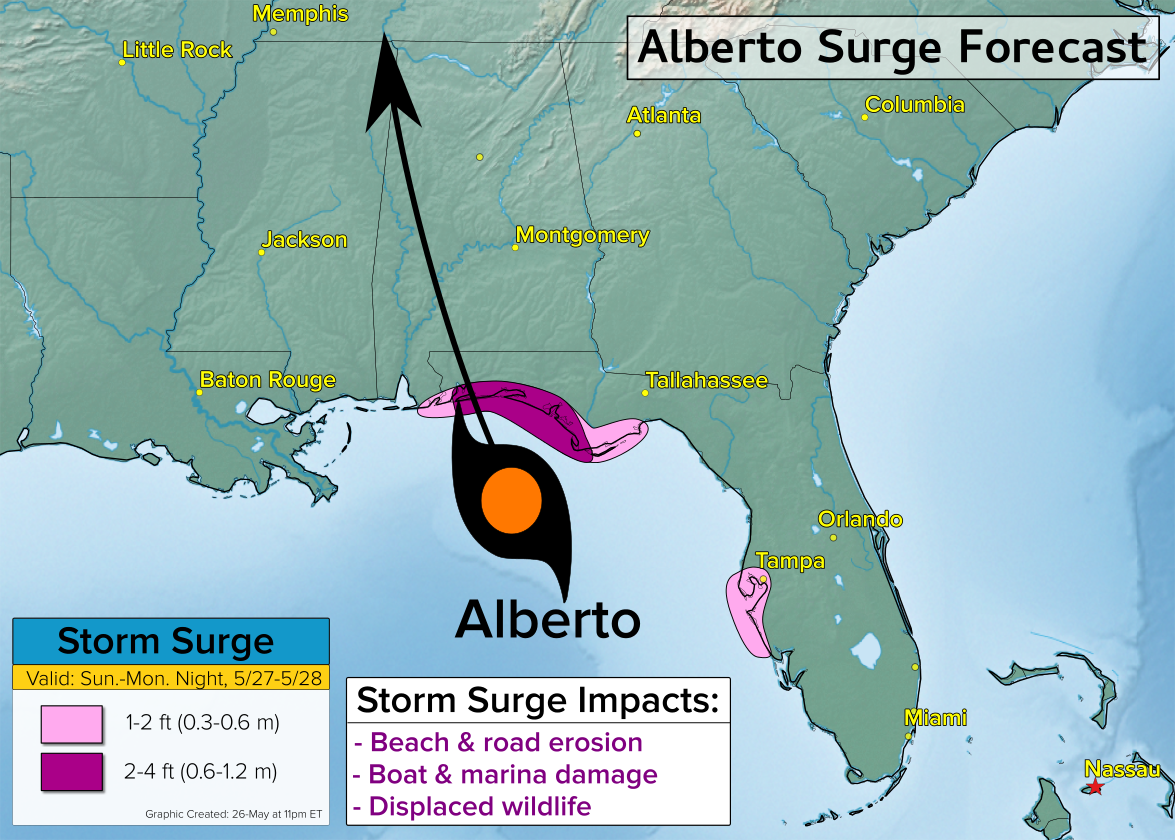
The circulation around Alberto is large which means the wind field around the storm is also quite large. Consequently, tropical storm force winds of 39 mph or greater could extend up to 120 nautical miles from the center of Alberto.
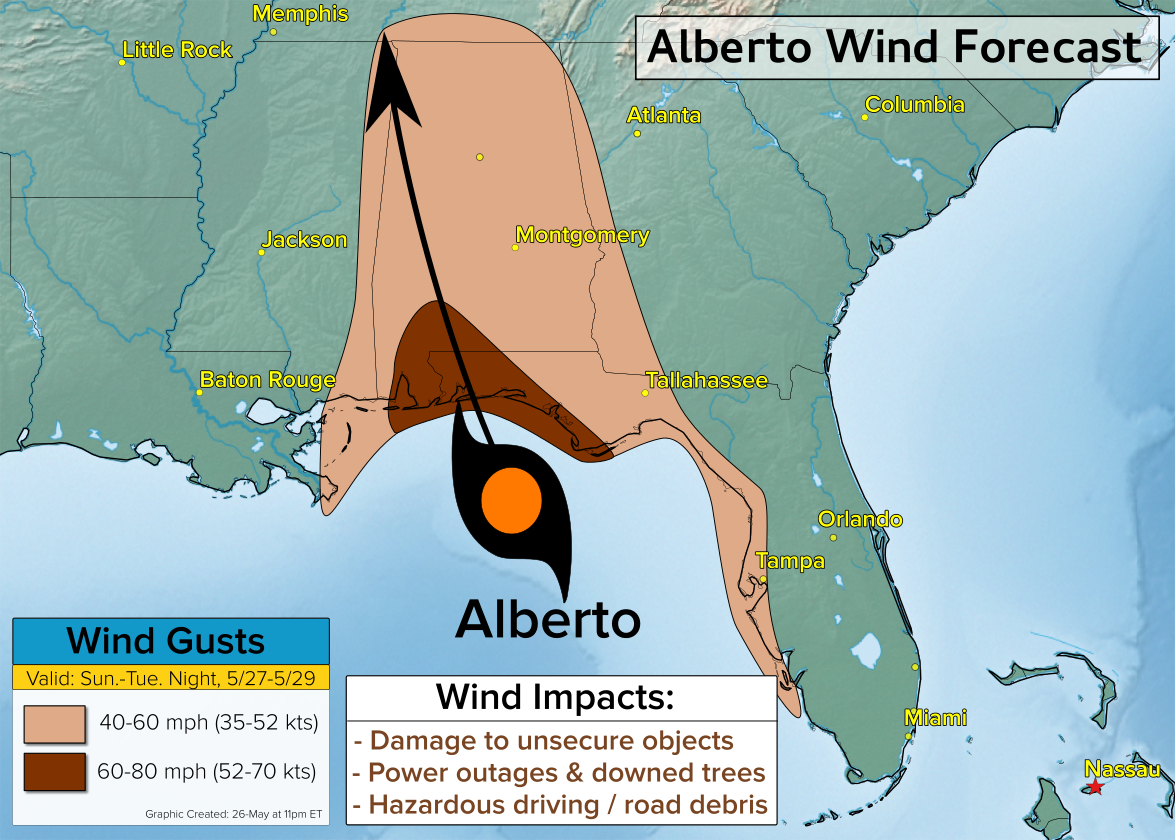 Alberto will also bring an abundance of tropical moisture northward from the Caribbean and Gulf of Mexico. The tropical moisture associated with Alberto will interact with a frontal boundary over the mid-Atlantic to bring a widespread area of heavy rain through Wednesday.
Alberto will also bring an abundance of tropical moisture northward from the Caribbean and Gulf of Mexico. The tropical moisture associated with Alberto will interact with a frontal boundary over the mid-Atlantic to bring a widespread area of heavy rain through Wednesday.
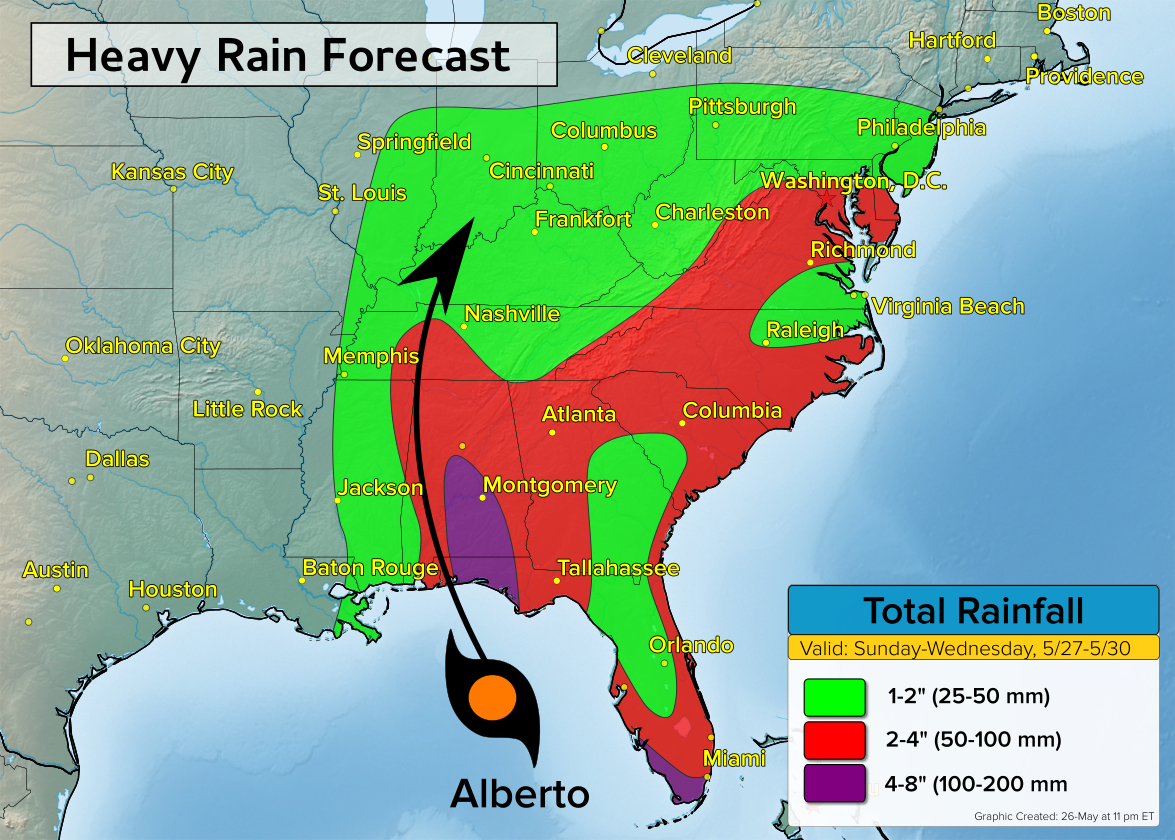
The heaviest rain is expected near and just east of the track of Alberto where 4-8 inches is expected. A second area of heavy rain is expected across southern Florida.
Across the Carolina’s and the mid-Atlantic, the rainfall expected will be due to tropical moisture moving in from the Atlantic Ocean and not directly from Alberto.
The wind risk from Alberto will diminish Tuesday night and Wednesday, but areas of heavy rain could continue across the Ohio Valley into Thursday.
